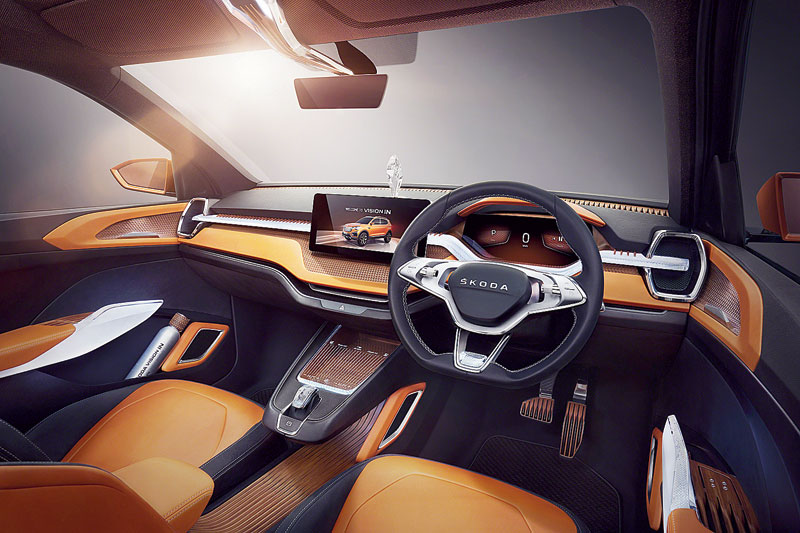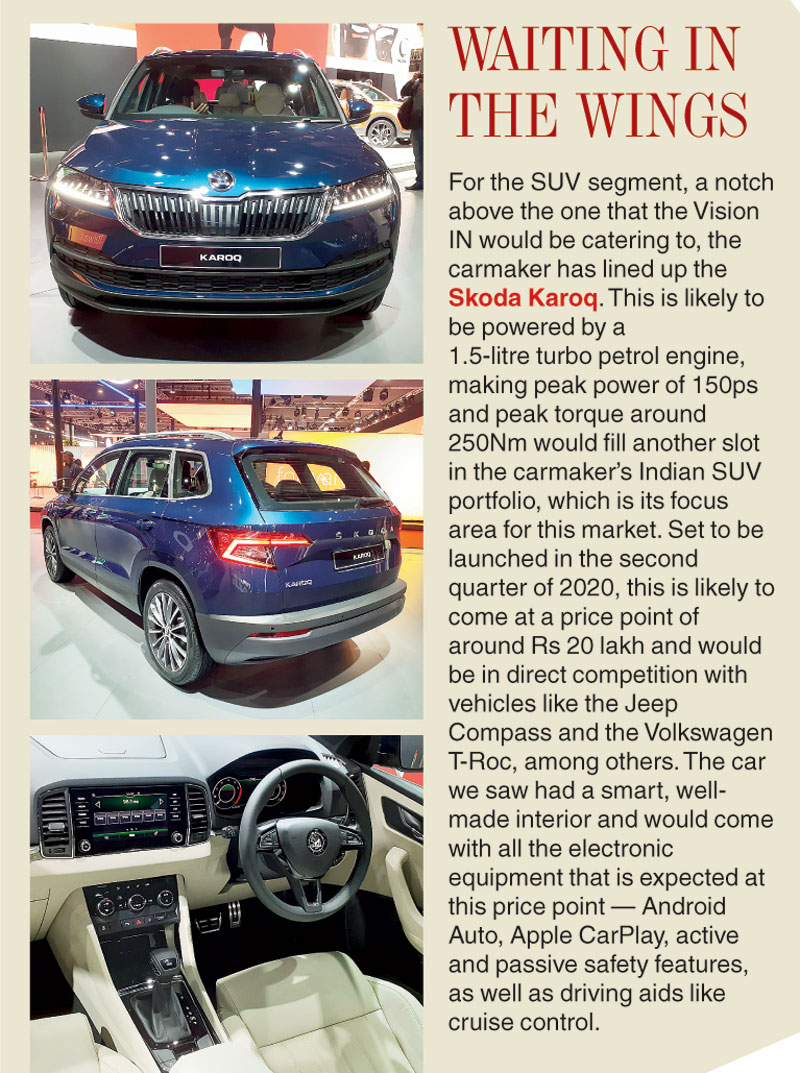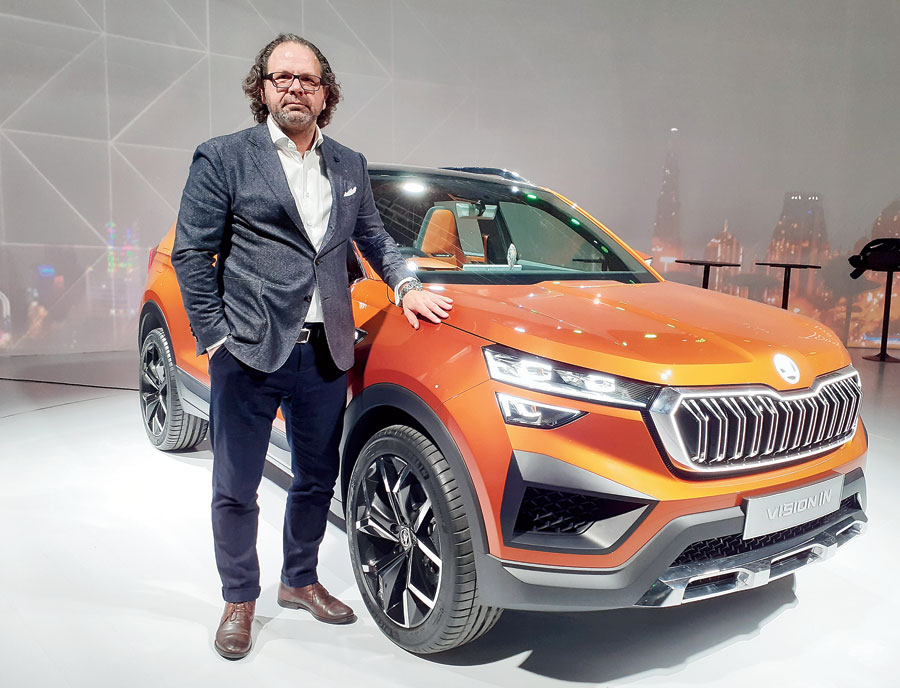The Vision IN is its first SUV, says Skoda Auto, that has been designed with India in mind. And the person in charge of delivering the desired look of the vehicle was Skoda Auto’s head of design, Oliver Stefani. The Telegraph sat him down for a chat to figure out both the ‘Vision’ and ‘IN’ parts of the story. Excerpts.

Indian kalamkari and Czech crystal combine in the interiors The author and SAVWIPL
What were the challenges that you faced and things that you had to keep in mind when you were designing the Vision IN?
Since this car was designed specifically for the Indian market, it was very interesting for us to find out what the expectation is of the Indian customers for a car like this from Skoda. We visited India and we were talking to the people for feedback. Also, we talked to our Indian people working at Mlada Boleslav (Skoda’s headquarters in the Czech Republic) to find out the right direction for this car.
Can you give us some specifics?
The takeaway was that it should be a very compact car, of course. A dynamic roofline is something we had in mind, but also the fact that it should be tough-looking and masculine. This was one of the clear comments from their side about what the car should look like. We wanted to have a very compact car on the outside but which on the inside should not only offer a lot of room to the passengers in the front, but also at the rear.
Did you benchmark this car against any other car in the market? Which ones?
Of course, you benchmark yourself against competitors and all cars that are relevant for the design. There were several cars and the (Hyundai) Creta was one of them. This one is a very good size and should fit very well into the market and create a new segment.
Skoda’s Vision IN and Volkswagen’s Taigun have the same underpinnings. So what will be the differentiators?
Yes, they are and they are coming from the same factory. But our goal was very clear. It had to have a very strong and unique Skoda characteristic. Like I was describing, in the front (the wide Skoda grille and the large bonnet), for instance, and also at the rear (the tail lights and the creases) that it is fitting the brand from the design perspective. This is one of the main differentiators that you see from Volkswagen.

Waiting in the wings: The Skoda Karoq The Telegraph
The car has a very sharp, angular and edgy look. Why did you go with that sort of appearance?
In the front and the rear we have these crystal shapes. And it is something that we do in a lot of our cars because it is part of the ‘crystalline’ direction that we use at Skoda. It is very sharp and defines the corners very nicely. We think it’s very modern.
Tell us about the ‘crystalline’ design elements.
Crystalline is one of our basic design ideas. We have this very strong Bohemian crystal design culture in Mlada Boleslav and this precision and clear crystal design (in the grille and also on the dashboard) that you see in this car is also something that we incorporated into it. You see this in some areas in the front and in the headlights and the tail lights. Also, some areas in the inside in terms of materials and graphics and the HMI (human-machine interface), particularly in the displays.
There are some Indian motifs, like kalamkari and so on, that you have used. Can you tell us how that came about?
On one of the visits by our colour and trim ladies (designers) to India, they brought these (block printing) stamps back from India. They were made of rosewood and hand carved and they looked just fantastic. So we had the idea to incorporate this typically Indian tradition and culture in the car and this goes with the crystal design handcrafted tradition that we have in the Czech Republic. So these bring both the cultures together.
How are you going to take the Skoda design language forward in India?
Well, we would also develop our design language in India probably. We have our design criteria that is a global idea because we always want that you recognise a Skoda family member, but it will also be adopted to the taste and the criteria of different markets. And sometimes there are little bits that are different, and that’s the idea.

Skoda Octavia and the Lamborghini Huracan EVO rear-wheel drive The Telegraph










